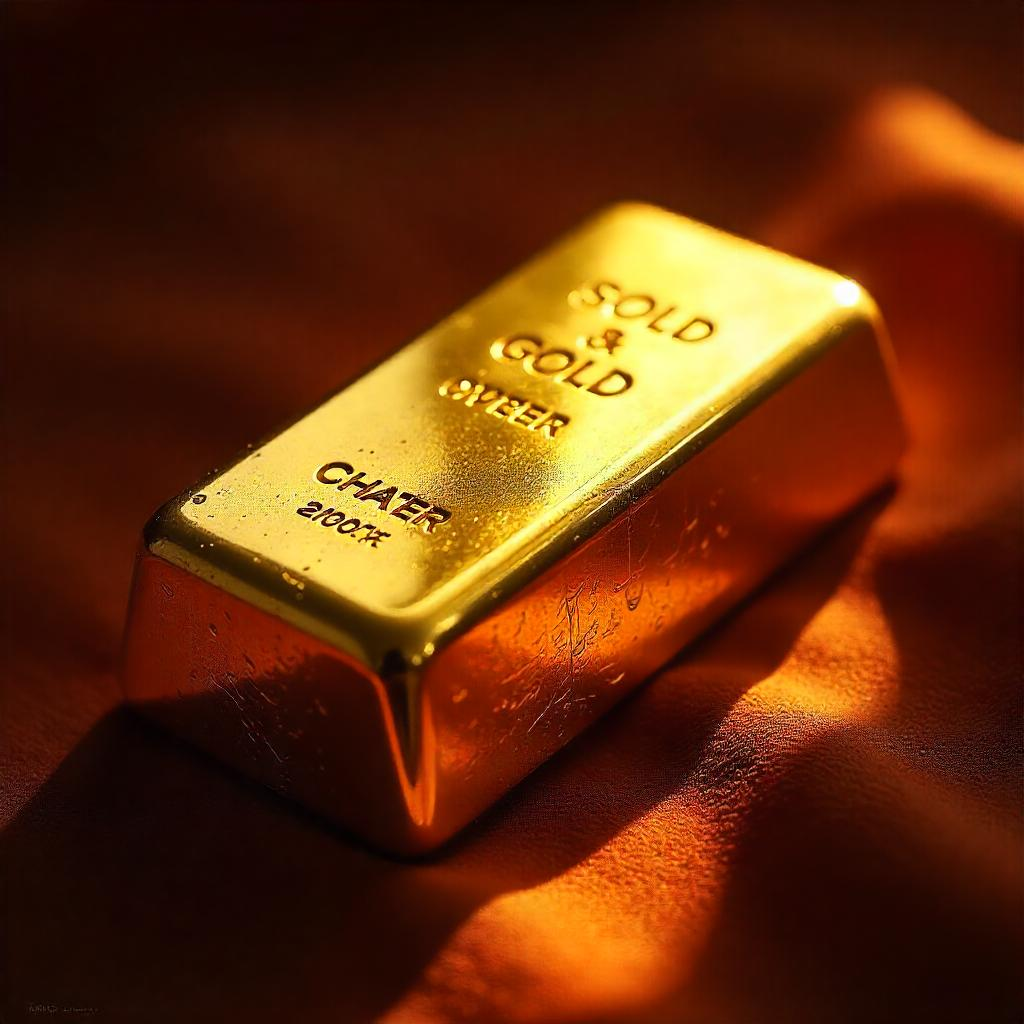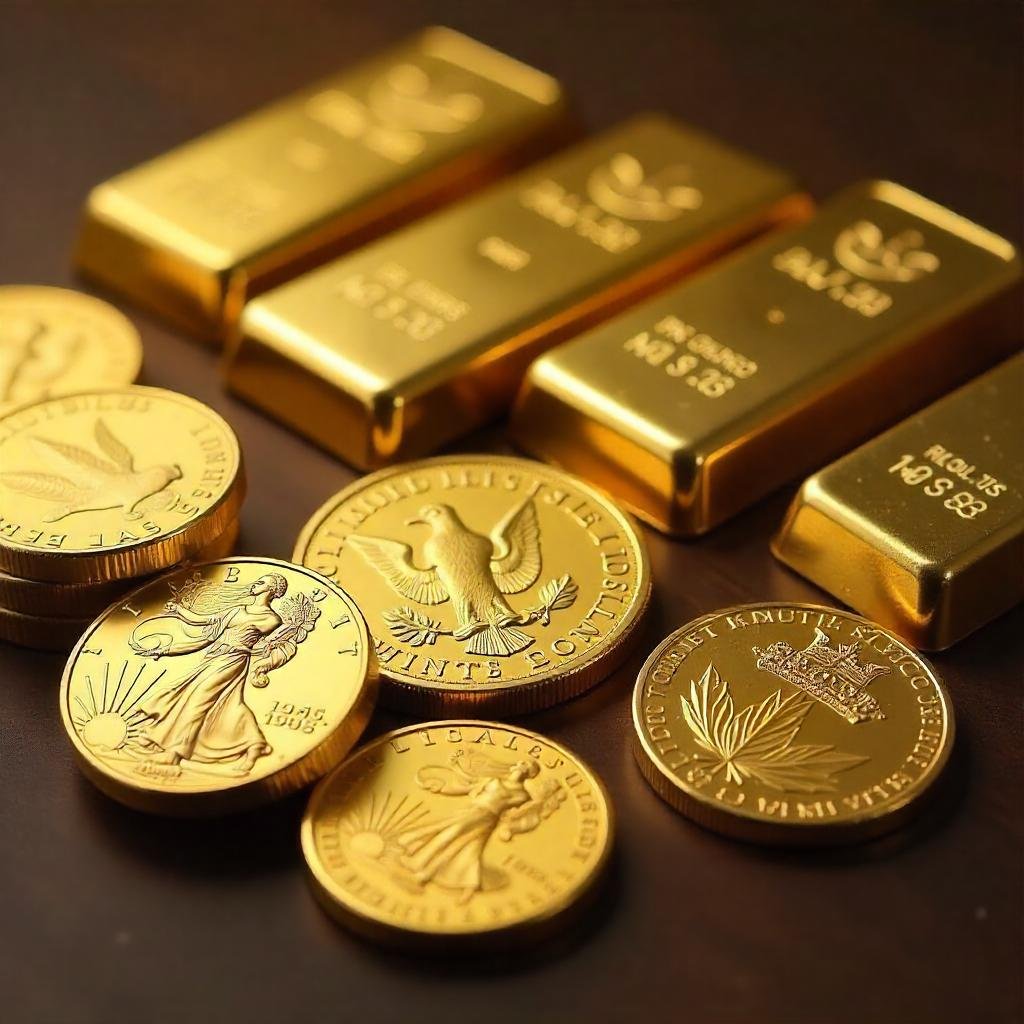Gold has a unique and lasting appeal as a store of value, a hedge against inflation, and a vital material in many industries. For anyone interested in this prized commodity, understanding its pricing mechanisms, especially the “spot price,” is crucial. This article will explore the specifics of gold’s spot pricing, offering a detailed guide for informed readers.
Summary
- Understanding the Essence of "Spot Gold"
- How the Spot Price is Forged: Global Trading Dynamics
- The Forces Driving Spot Price Fluctuations
- Spotting Trends: When Gold Prices May Move
- The Broad Impact of Spot Price Movements
- The Crucial Role and Limitations of the Spot Price
- Historical Spot Price Extremes: A Look Back (Last 10 Years: Mid-2015 to Mid-2025)
Understanding the Essence of “Spot Gold”
When discussing the “price of gold,” the term “spot price of gold” is frequently used. The addition of “spot” is crucial because it specifically refers to the price at which gold can be bought or sold for immediate delivery. It’s the current market price for physical gold, available right now. This immediacy is paramount, as it distinguishes the spot market from futures markets, where delivery might be months away. It ensures that the quoted price reflects the current value of having physical gold available for transfer quickly, typically within two business days. This is critical for industrial users, jewelers, and investors seeking direct ownership.
The spot price is not just “the price of gold” because gold, like many other commodities, can be traded through various instruments beyond immediate physical exchange. Without the “spot” qualifier, “price of gold” could ambiguously refer to futures prices (agreed upon today for future delivery), option prices (for the right to buy or sell in the future), or paper gold prices (the value of gold-backed ETFs or other financial derivatives). The spot price of gold is the most widely quoted and fundamental price in the gold market because it reflects the real-time supply and demand for physical gold and provides a benchmark for all other gold-related financial products.
How the Spot Price is Forged: Global Trading Dynamics
The spot price of gold is not set by a single entity but is derived from the constant trading activity in global over-the-counter (OTC) markets. These markets operate 24 hours a day, five days a week, across major financial centers like London, New York, Zurich, and Hong Kong. Large banks, bullion dealers, and financial institutions continuously quote bids (prices at which they are willing to buy) and asks (prices at which they are willing to sell) for physical gold. The interplay of these bids and asks determines the real-time spot price. Electronic trading platforms facilitate this continuous price discovery.
Precisely, the spot price of gold is not announced by a single authoritative body in the way a central bank sets interest rates. It is a constantly evolving consensus price determined by the continuous trading activity. It changes continuously, minute by minute, second by second, as new trades occur and market conditions evolve. There isn’t a fixed frequency like “every hour” or “every day.” Financial news channels, dedicated precious metal websites, and brokerage platforms provide real-time spot price feeds.

The Forces Driving Spot Price Fluctuations
The spot price of gold, like any commodity, is primarily driven by the fundamental forces of supply and demand. However, several specific factors contribute to its volatility:
- Geopolitical and Economic Stability: Gold is often considered a “safe haven” asset. During times of political instability, economic uncertainty, or financial crises, investors tend to flock to gold, driving its demand and price higher. Conversely, periods of calm and economic growth can lead to a decrease in safe-haven demand, potentially lowering prices.
- Interest Rates and Monetary Policy: The relationship between interest rates and gold is generally inverse. When central banks raise interest rates, holding interest-bearing assets like bonds becomes more attractive. Gold, which does not offer interest or dividends, becomes relatively less appealing. Conversely, lower interest rates or quantitative easing policies can make gold more attractive.
- Inflation and Deflation: Gold is widely regarded as a hedge against inflation. When the purchasing power of fiat currencies erodes due to rising inflation, gold tends to retain its value or even appreciate. In deflationary environments, however, gold’s appeal as an inflation hedge diminishes.
- Currency Strength (especially the US Dollar): Gold is typically denominated in US dollars. A stronger US dollar makes gold more expensive for holders of other currencies, potentially dampening demand and pushing prices down. Conversely, a weaker dollar makes gold cheaper, which can boost demand and push prices up.
- Mining Supply and Production Costs: While more stable than demand, changes in gold mining output and the cost of extraction can influence supply. Significant new discoveries or technological advancements that lower mining costs could increase supply and potentially depress prices.
- Jewelry and Industrial Demand: A substantial portion of gold demand comes from the jewelry industry. Industrial uses, such as in electronics and dentistry, also contribute. Therefore, shifts in consumer trends or technological advancements in these sectors can impact overall demand.
- Investment Demand: Demand from investors, including institutional investors, hedge funds, and individual buyers of physical gold or gold-backed exchange-traded funds (ETFs), significantly influences price. Market sentiment and speculative trading can also play a role.
Spotting Trends: When Gold Prices May Move
Predicting the exact direction of gold prices with certainty is impossible, as many factors are unpredictable. However, one can identify periods with a higher likelihood of price movement in a certain direction by monitoring key indicators and trends:
- Potential for Price Increase (Bullish Signals): Escalating geopolitical tensions, economic uncertainty or recession fears, high or rising inflation, falling real interest rates, a weakening US Dollar, increased central bank gold purchases, and strong physical demand for jewelry or investment.
- Potential for Price Decrease (Bearish Signals): Easing geopolitical tensions, strong economic growth and market confidence, rising real interest rates, a stronger US Dollar, decreased central bank gold purchases or sales, and weak physical demand.
Analyzing these factors in conjunction with technical analysis (chart patterns, moving averages) can provide a more informed perspective on potential spot price directions.
The Broad Impact of Spot Price Movements
Variations in gold’s spot price have significant consequences across various sectors and activities:
- Mining Companies: A drop in the spot price can significantly reduce revenue and profitability, potentially leading to job losses or mine closures. Conversely, a rising spot price boosts profits, encouraging exploration and mine expansion.
- Jewelry Industry: Lower spot prices can stimulate consumer demand for gold jewelry, making it more affordable. Higher prices, however, can dampen sales or necessitate designs with less gold.
- Central Banks and Governments: For countries holding significant gold reserves, a change in the spot price directly impacts the value of their national assets, affecting balance sheets and perceived economic stability.
- Investors: Investors holding physical gold or gold-backed financial products will see their portfolio values fluctuate directly with the spot price, leading to gains or losses upon sale.
- Electronics and Dentistry (Industrial Users): The spot price directly affects the cost of raw materials for manufacturers using gold in products like circuit boards or dental fillings, influencing their profit margins and product pricing.

The Crucial Role and Limitations of the Spot Price
Knowing the spot price of gold is critically important for several reasons: it is the primary benchmark for investment decisions, ensuring fair valuation in physical gold transactions, serving as an economic indicator of global health and sentiment, and enabling risk management for businesses.
However, the spot price of gold has its limitations. It represents the value of gold as a raw commodity in large institutional trades, not the retail price of a finished gold product. Therefore, the spot price of gold is not the exact price one will pay for an ounce of physical gold. When purchasing a gold coin or bar, the final price will always be higher than the spot price.
The final price often differs from the spot price due to factors such as:
- Dealer’s Premium/Margin: Covering operating costs, storage, insurance, and profit.
- Fabrication/Minting Costs: The expense of transforming raw gold into a coin or bar.
- Shipping and Insurance: Costs for secure transport.
- Taxes: Applicable sales tax, VAT, or import duties based on jurisdiction.
This additional cost above the spot price is known as the gold premium. The premium is the amount by which the price of a physical gold product (like a coin or bar) exceeds the current spot price. It distinguishes the cost of acquiring the physical item from the underlying value of the metal itself.
Furthermore, Gold in its various physical forms, including bars, ingots, and coins, do not have the exact same spot price when purchased by a consumer, and this is primarily due to varying premiums.
While both derive their fundamental value from the underlying spot price, their final selling price will include differing premiums:
- Bars/Ingots: Generally have a lower premium over the spot price, especially for larger sizes, as they are valued almost purely for their gold content.
- Coins: Often command a higher premium than bars due to minting costs, collectibility or numismatic value (for rare or historical coins), ease of portability, and brand recognition from sovereign mints.
Historical Spot Price Extremes: A Look Back (Last 10 Years: Mid-2015 to Mid-2025)
Over the past decade, the spot price of gold has experienced notable fluctuations. It saw a significant dip around late 2015 to early 2016, with prices generally hovering in the $1,050 – $1,150 per troy ounce range. This period followed a strong US dollar and expectations of rising interest rates. Conversely, gold has reached new all-time highs in recent years, particularly in 2020 during the COVID-19 pandemic and again in late 2023 and early 2024 amid geopolitical tensions and inflation concerns. The price has exceeded $2,400 per troy ounce at its peak during this 10-year window. For exact historical high and low points, consulting a reliable financial data provider is recommended.
In conclusion, the spot price of gold serves as the most immediate and critical indicator of gold’s value in the global market. While influenced by a myriad of economic and geopolitical factors, understanding its real-time determination and its distinction from the final retail price of physical products is fundamental for navigating the complexities of the gold market.



